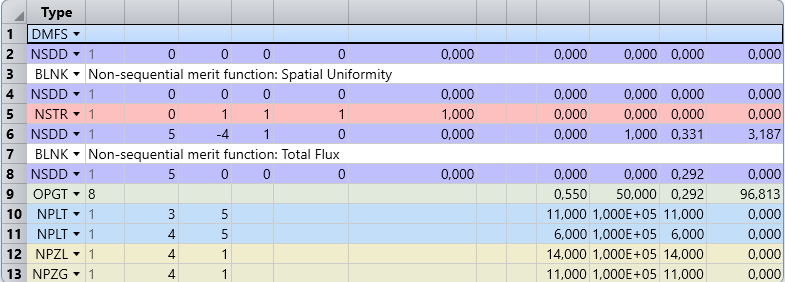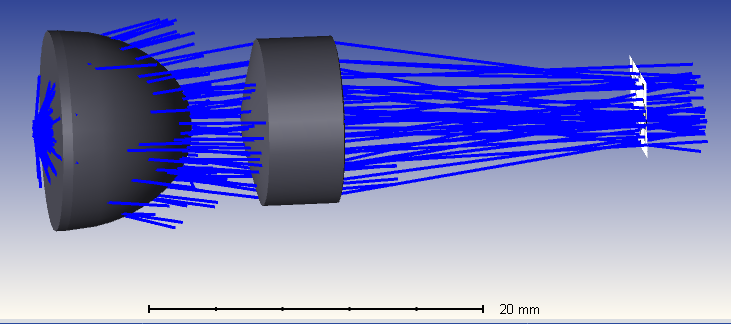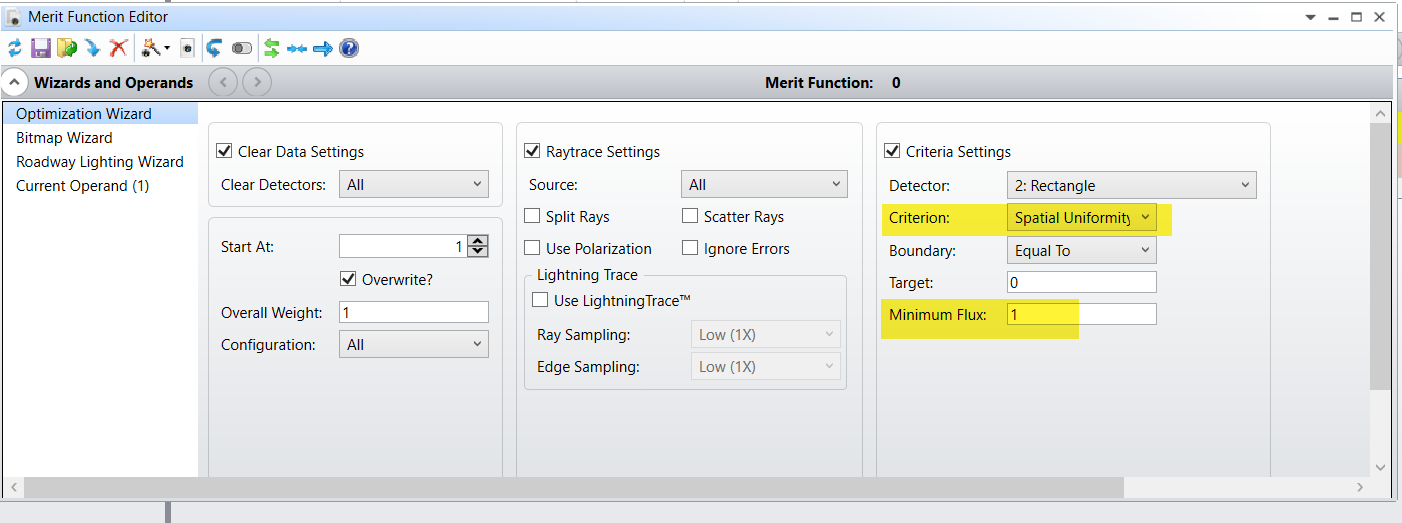I would like to optimize a 2 lens illumination system for 'high' efficiency and 'high' homogeneity. I have red articles on Zemax page (idea shown in image; starting point was optimized as imaging system in sequential mode). 1st question is impact of detector settings for optimization (I use rectangular detector). What is the impact of detector resolution and #Analysis rays. For example on detector image I am using 21x 12 pixels and 1E5 Analysis rays. Light Source is Source Rectangle with rectangular shape and Cosine Exponent=1. I have used this small amount of pixels to avoid to noise detector result. Is there any guideline?
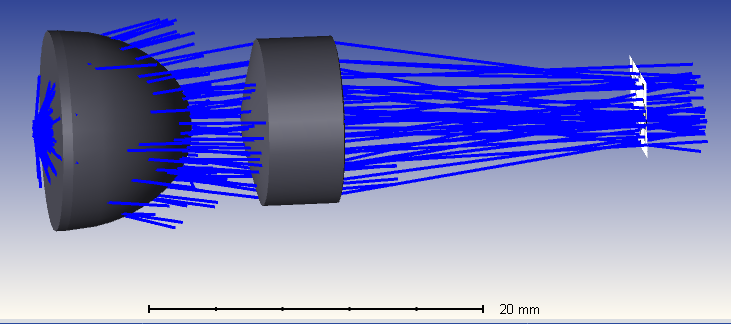
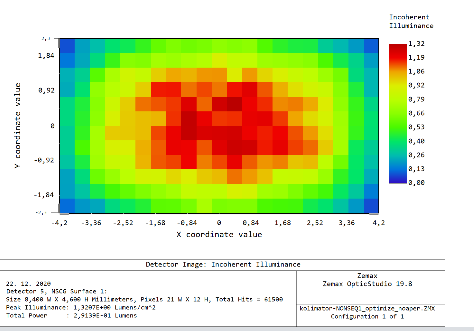
Merit function is defined bellow. IS there any hint how to procedu with optimization regarding homogeneity vs. efficiency?
Should both be optimized at the same time or should maybe weight be at first higher for efficiency and later changed?
